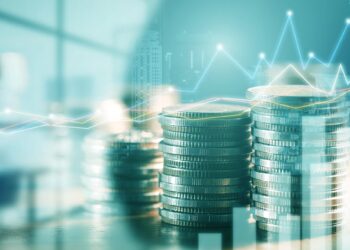An ASIC-commissioned report warns that private credit’s rapid growth masks weak disclosures, conflicts of interest, and a heavy concentration in property lending that could leave smaller and self-managed super funds exposed when the cycle turns.
The report, Private Credit in Australia, was prepared by former banker Nigel Williams and infrastructure investor Richard Timbs, and is ASIC’s most comprehensive survey of the sector so far.
Its message is double-edged: private credit “done well” can play a valuable role in the economy, but in parts of the market, standards fall well short of best practice.
The report highlighted a familiar divide: big institutional super funds and global managers generally stick to international standards on governance, valuations, and fees. But smaller funds, aimed at SMSFs and “sophisticated” wholesale investors, often disclose little, rely on internal rather than independent valuations, and take a bigger cut of borrower-paid fees.
Property at the centre
The report flagged concentration as one of its biggest concerns, finding that 40–60 per cent of the $200 billion private credit market is tied up in real estate, much of it in construction and development loans.
Those loans are riskier than they appear, the authors warned, because repayments hinge on projects being completed and sold or refinanced, rather than on steady cash flow.
“While we have not assessed the systemic risk to the Australian financial system from private credit, we note the concentration in real estate construction and development finance, which has represented the majority of credit losses in past economic downturns in Australia and overseas,” the report said.
“This segment of the market may present as a systemic risk for small and self-managed superannuation funds and ‘sophisticated’ investors in a downturn.”
The worry is heightened by how these products are sold. Namely, some SMSF-focused funds, the authors warned, promise monthly distributions of 0.7–1 per cent even though the loans behind them don’t pay regular interest.
“The question needs to be asked as to whether distributions are being paid from capital – from loan capital drawdown or new investor funds,” the pair said.
Fees, conflicts, and liquidity
The review also took aim at remuneration, finding that while international practice usually passes borrower fees straight to investors, some Australian managers keep between half and all of those payments.
Some managers also pocket the “spread” between what borrowers pay and what investors receive by routing loans through special purpose vehicles, a practice the report warned can distort incentives and make true returns harder to assess.
Valuations also came under fire, with the authors noting that many funds rely on in-house assessments – sometimes by staff whose bonuses depend on loan performance – a set-up that risks inflating asset values and driving up management fees.
Liquidity was another red flag, with the report questioning whether disclosures about opportunities and processes are adequate, given differences between open-ended and closed-ended funds. It also warned of liquidity mismatches between investor withdrawal needs and the underlying asset pool, noting the importance of stress testing.
What should ASIC do?
Far from merely alarmist, the report also set out a list of practical, measurable good practices, including “regular” fund composition reporting (number of loans, concentration by borrower, proportion of loans in arrears), independent quarterly valuations, full disclosure of all manager remuneration (including borrower fees and net interest margins), and clearer definitions of key terms, such as “security” or “senior”.
“We believe there will be industry support for industry-led guidance on best practice operations and reporting for Australian private credit,” Timbs and Williams said.
“Despite the market being broad, and the wide range of quality and capability among private credit operators, it is likely that the larger and more significant participants would coalesce around practices similar to what we have outlined as good practices,” the authors noted and added that smaller, “less sophisticated operators” may be less interested in “voluntarily signing up to improved practices”.
Why it matters
The report concluded that, for now, the market is too small to pose a systemic threat, making widespread risk “unlikely to be a major concern today”.
It did, however, warn that concentrated exposures – especially in property development – and growing bank linkages to private credit could change that calculus in a downturn.
“Stress testing for the impacts of an economic downturn, especially on real estate values, would be particularly instructive for managers and regulators,” the authors advised.
If the market is to keep growing without sowing future losses, the report said, participants should embrace transparency rather than resist it.
“The integrity of the market depends upon investors, borrowers and the broader financial community having confidence in the transparency and workings of the sector,” they said.
How did ASIC react
In a statement accompanying the report’s release, ASIC chair Joe Longo said the research showed the importance of adhering to existing regulation and highly regarded global standards to ensure confidence in Australia’s private credit sector.
“Private credit is playing an important role in our capital markets and Australia should implement industry standards that align with international best practice,” Longo said.
“Enhanced standards are needed to lift practices across the sector. They will help promote confidence, improve market integrity and empower investors to make informed decisions.
“When an industry agrees on clear standards, it shows a strong commitment to doing things right and we welcome the industry’s commitment to leading this work. They need to act decisively.”
ASIC, Longo added, expects meaningful action in response to these findings and will not hesitate to intervene where progress falls short.
In November, ASIC will release its response to the discussion paper on Australia’s evolving capital markets, alongside its retail and wholesale surveillance findings.
The regulator said the response will set out clear principles, supported by further research and expert input, to shape its future priorities, work program, and regulatory roadmap.




